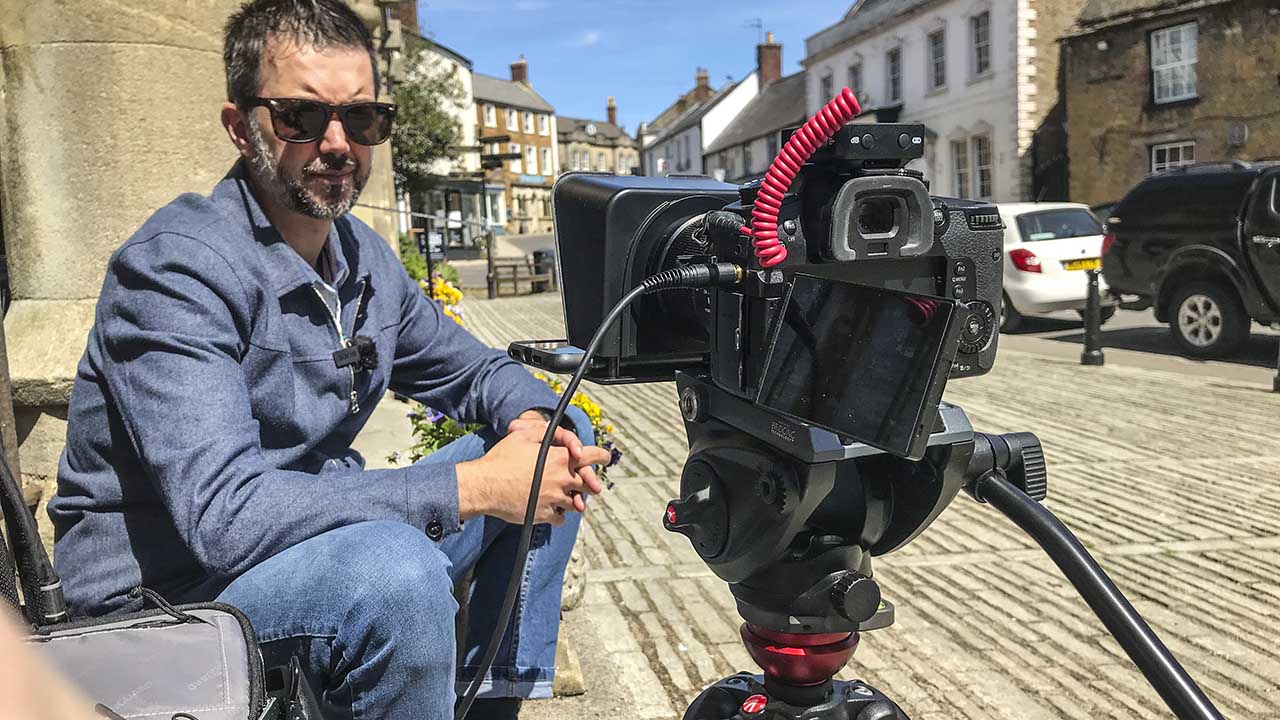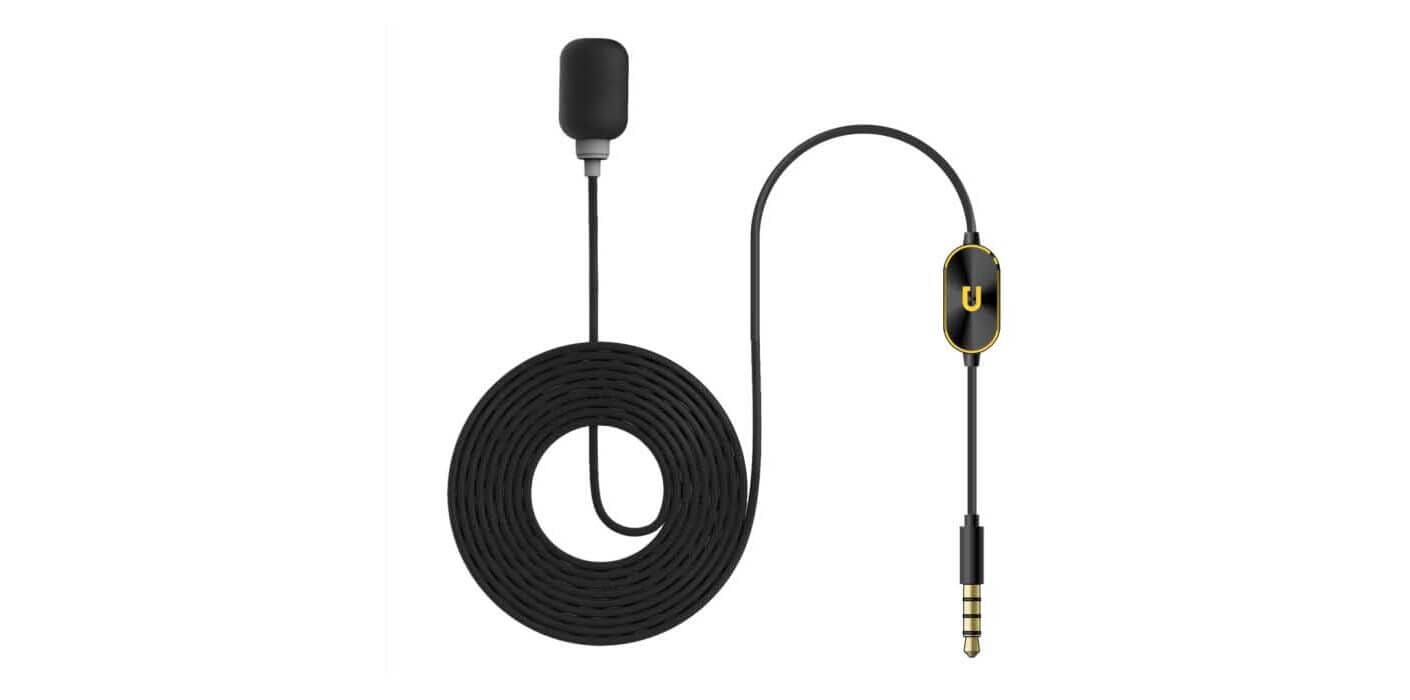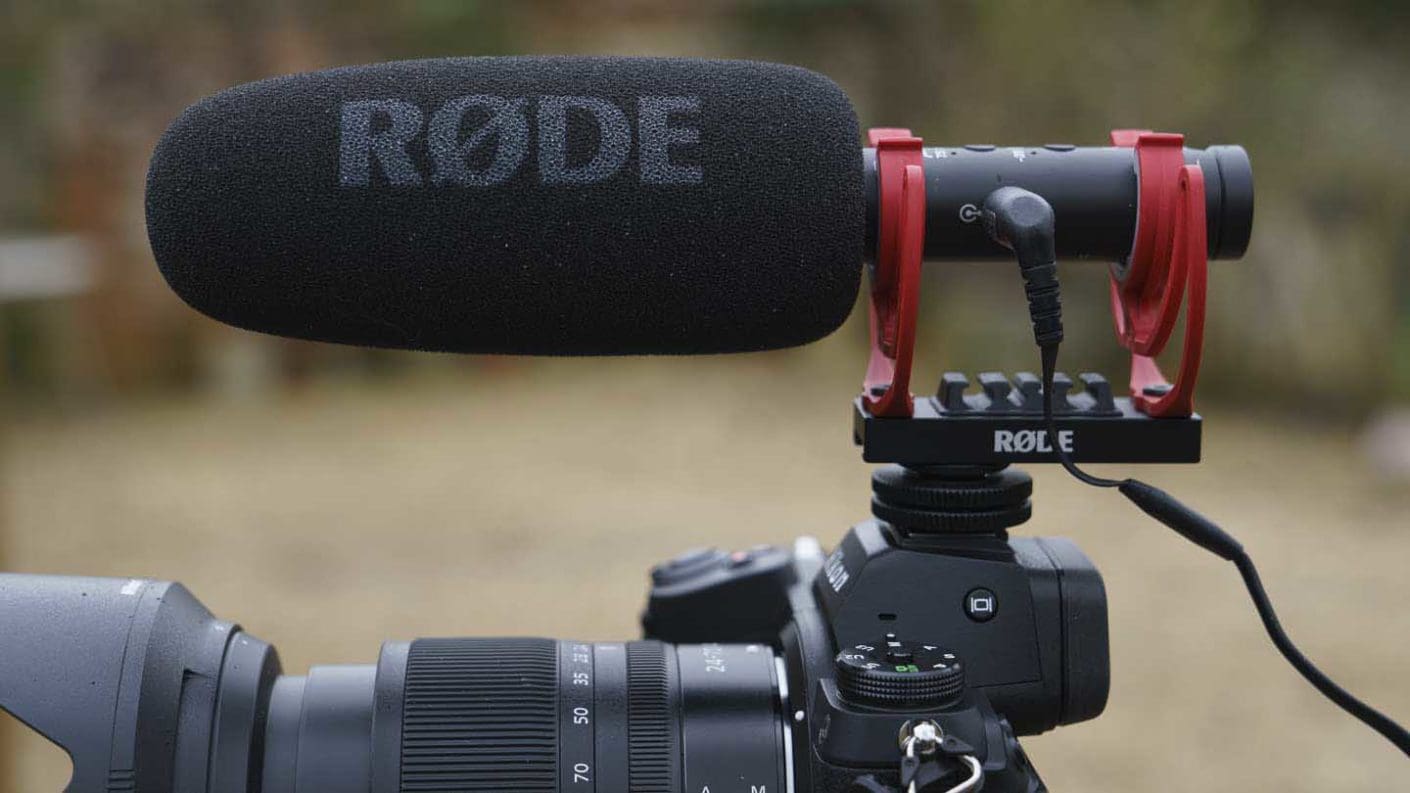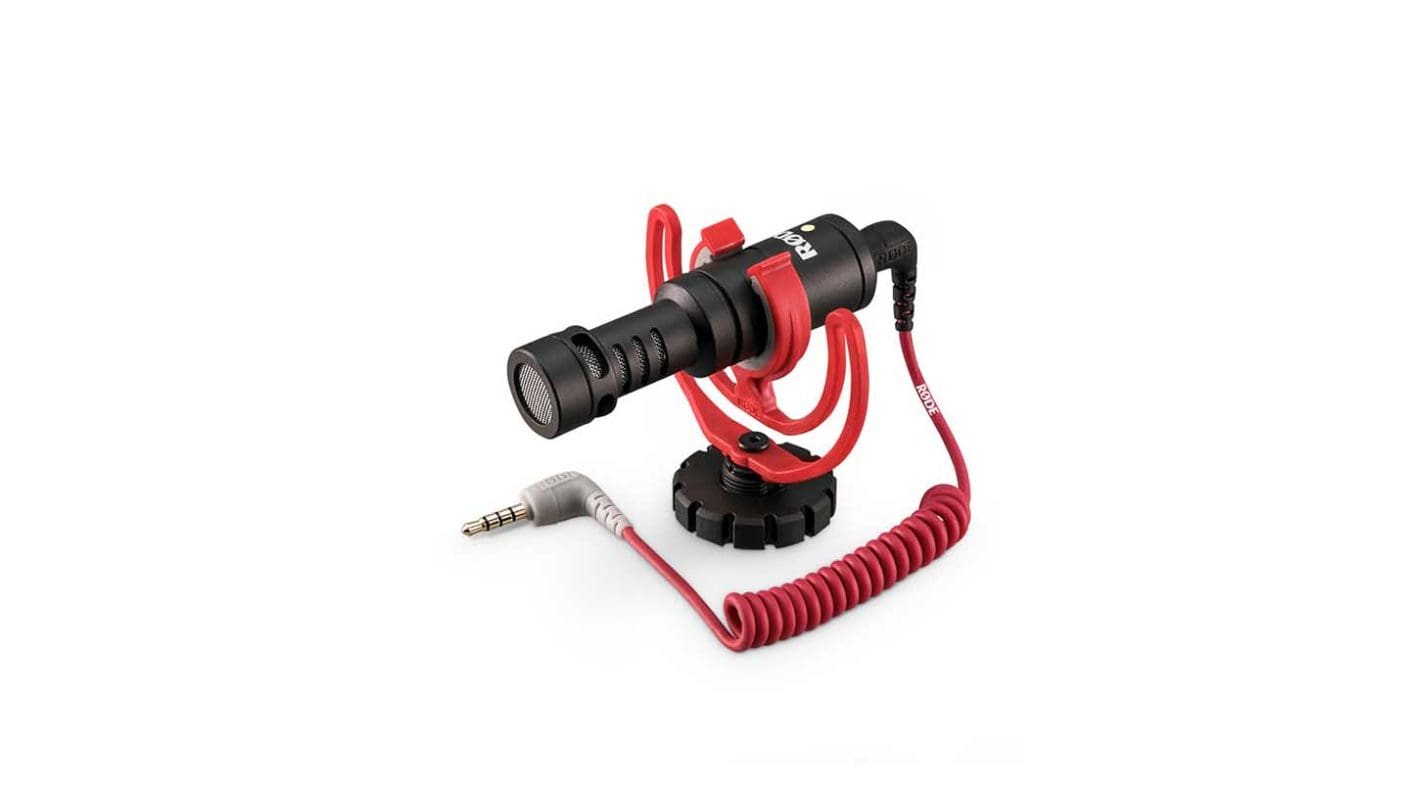Looking for the best microphone for vlogging about your passion projects, or even just your daily life? If not, you should be. Nothing can ruin a video more than poor audio can. Think about it: would you be willing to sit through a video with choppy editing that jumps all over the place?
Now consider if you would be willing to sit through a video with faint sound or excessive wind noise? It’s too distracting. A simple microphone can instantly improve the quality of your footage and increase engagement on YouTube.
Becoming a credible YouTuber requires more than just buying the best vlogging camera you can get. Without a decent mic you’ll never stand out from the crowd.
In this guide we’ve rounded up the best vlogging microphones you can buy to boost your audio quality, whether you record on your smartphone or a sophisticated mirrorless camera.
There are lots of different microphone options out there. You can read more here about the different types of microphones and audio recorders.
How much does a good microphone cost?
The best vlogging microphones will probably have a price point starting at £75 / $100 and above. It’s tempting to go for the cheap lavalier and USB mics you can find on Amazon for dirt cheap, but you’re getting what you pay for. Apart from breaking easily, these often hiss and crackle and don’t provide the cleanest sound.
So if you’re serious about your vlogging, after your camera your microphone is your most important piece of equipment. You likely invested in a quality camera, so wouldn’t you want to equally invest in clean audio?
In our guide to the best vlogging microphones we’ve chosen a mix of lavalier and shotgun mics, wired and wireless, all chosen based on their balance of impeccable sound quality and value for money.
The best microphones for vlogging
Specification
-
Product type: Wireless microphone system
-
Announced: 23rd February 2021
-
Transmission type: 2.4GHz Digital Frequency with 128-bit encription
-
Transmission range: 200m line of sight
-
Microphone type: Omnidirectional
-
Input: 3.5mm TRS
-
Frequency Range: 50Hz - 20kHz
-
Power: Built-in rechargeable Li-po battery with a life of up to 7 hours
-
Dimensions: Transmitters: 44x45.3x18.3 mm, Receiver: 44x45.5x18.3mm
-
Weight: Transmitters: 30g, Receiver: 32g
Rode’s Wireless Go II is the update to the original Wireless Go which made using a wireless mic easier than ever before. It employs a 2.4GHz frequency band and offers a range of about 200m, more than twice the range of the original system.
In another key upgrade of the original, the Rode Wireless Go II receiver is capable of connecting with two transmitters. That makes it useful for face-to-face interviews as well as individual narration or voiceovers.
Both transmitters in the Wireless Go II kit have a pre-polarized and pressure-operated internal capsule with an omnidirectional pickup pattern and a frequency range of 50Hz to 20kHz. They also have a 3.5mm TRS input which means that it’s also possible to connect another microphone, such as a lavalier.
Rode has upped the game for the Wireless Go II by adding the ability to record over 40 hours of audio to each transmitter, and the introduction of a safety channel that records a second channel that’s 20bD lower than the main channel’s.
There’s a clip on the transmitters and receiver to enable them to be attached to clothing – or a camera hotshoe in the case of the receiver. They are also powered by an internal rechargeable battery with a life of up to seven hours on a single charge.
The Wireless Go, which continues in Rode’s range, is one of the best vlogging mics you can buy and its replacement, the Rode Wireless Go II makes a great upgrade with some useful advanced features.
You can order the Rode Wireless Go II from Wex Photo Video in the UK and B&H Photo Video or Adorama in the USA.
Read our Rode Wireless Go II Review
Price when reviewed
£279
$299 Check current price
For
- Small, compact units with a built-in mic
- Dual-channel recording
- Safety channel available
Against
- Internal battery not replaceable
- Advanced features require a computer for activation and deactivation
Specification
-
Product type: Wireless microphone system
-
Transmission type: 2.4GHz Digital Frequency Agile System
-
Microphone type: Omnidirectional
-
Frequency Range: 50Hz - 20kHz
-
External Mic Input: 20Hz - 20kHz
-
Maximum Output Level: +3dBu
-
Power: Built-in rechargeable Li-po battery with a life of up to 7 hours
Rode’s Wireless GO system uses a 2.4GHz frequency band and offers a range of about 250 feet. Rode designed the transmitter with a pre-polarized and pressure-operated internal capsule that features an omnidirectional pickup pattern and frequency range of 50Hz to 20kHz. It also boasts a standard 3.5mm TRS input.
Both the transmitter and receiver have a clip, and the unit runs on a rechargeable internal battery that lasts up to seven hours on a single charge.
The unique selling point of the Wireless GO, however, is that its transmitter unit contains an omnidirectional condenser microphone and a clip. This means it can double as either a clip-on mic or a belt pack for a lavalier (either Rode’s model or a third party unit).
The transmitter then sends the audio to Rode’s Series II 2.4GHz receiver.
The Wireless GO is one of the best vlogging mics you can buy. It’s priced competitively, its small and portable and the sound quality is terrific.
Read our Rode Wireless GO review
Price when reviewed
£159
$278.00 Check current price
For
- Small, compact units with a built-in mic
- Easy to pair the receiver and transmitter pair
- Compatible with external mic via a 3.5mm port
Against
- Can't pair the receiver with more than one transmitter
- The supplied windshield gets knocked off fairly easily
Specification
-
Microphone type: Pre-polarized condenser
-
Pick up pattern: Omni-Directional
-
Frequency range: 50HZ ~ 20KHZ
-
Output impedance: 2.2KΩ
-
Sensitivity: -40±2dB
-
Signal to noise ratio: >67dB
-
Battery: 2x LR41 (or AG3)
-
Connection: 3.5mm TRRS
-
Cable length: 5m
Straight out of the box this lavalier microphone is compatible with DSLRs, camcorders, smartphones, laptops, bodypack transmitters, laptops and tablets (though some late-model iOS devices may require an Apple Lightning to 3.5mm Headphone Jack Adapter).
It’s said to be the world’s first lavalier mic to feature a microprocessor that adapts the TRRS plug to work with almost any 3.5mm microphone jack and it comes with a five-metre cable.
A nice touch is the inclusion of a cable winder in the kit, which helps you to keep the cable in order. It’s powered by two LR41 batteries, which go to sleep once the V.Lav has adapted to your camera or device – it will take power from the device from then on.
Also in the kit are a faux fur windshield, a foam windscreen, a tie clip and a tough-feeling carrying pouch.
Price when reviewed
£40
$49.99 Check current price
For
- Microprocessor adapts the TRRS plug to work with most 3.5mm mic jacks
- Windshield and windscreen included
- High-quality cable
Against
- Cables can be a trip hazard
Specification
-
Polar Pattern: Cardioid
-
Frequency: 75 Hz to 20 kHz
-
Power: Plug-In Power via Camera or Mobile Device
-
Signal-to-noise ratio: 75 dB SPL
Saramonic’s Vmic Mini is a lightweight shotgun microphone that mounts directly to your smartphone or interchangeable lens camera.
The Vmic Mini features a cardioid pickup pattern that is designed to capture audio from the front of the camera and dampen sounds from the background. What’s more, the mic is tuned with a boost at 8 kHz in order to give more clarity to human speech.
The Vmic Mini’s body design features an integrated shock mount to reduce the sound of handling noise and vibrations, and there’s also a windscreen included in the kit to help reduce wind noise.
The Vmic Mini also offers an integrated locking shoe mount so you can attach it to your camera and a 1/4-inch screw thread for mounting to your tripod, gimbal or stand.
Price when reviewed
£55
$59 Check current price
For
- Very lightweight
- Requires no batteries
Specification
-
Product type: Shotgun microphone
-
Connection: Auto-sensing 3.5mm, USB-C
-
Polar pattern: Supercardioid
-
Frequency range: 20Hz-20kHz
-
Frequency Response: 5Hz – 18kHz ±3 dB
-
Signal to noise Ratio: 105dB SPL (A-weighted, as per IEC651)
-
Sensitivity: -26 dB re 1V/Pa (50mV @ 94dB SPL) ± 1dB @ 1kHz
-
Battery : Internal 350mAh with 30+ hours life
-
Dimensions (L x W): 171 x 21.6mm
-
Weight: 94g
The Rode VideoMic NTG is a shotgun mic that combines some of the features and acoustic design of the excellent Rode NTG5 into a smaller form and it’s optimised for on-camera use. It usurps the Rode VideoMic Pro+ as Rode’s top-end mic for mounting on a camera.
While the Rode VideoMic NTG is most likely to be used with a DSLR or mirrorless camera, it can also be connected to a smartphone or a computer via a USB cable.
Rode has given the VideoMic NTG a super cardioid polar pattern that is designed to be more directional than Rode’s earlier VideoMics. It’s also claimed to have very low self-noise and a flat frequency response.
The Rode VideoMic NTG has the auto-power feature that was first introduced with the Rode VideoMic Pro+. This battery-saving feature detects when the camera is switched off and turns off the mic. It also powers up the mic when the camera is turned on again, so you never miss recording the audio because you forgot to power-up the microphone.
While we’re on the subject of the battery, the VideoMic NTG has an internal battery that can’t be removed. It takes around 2 hours to charge it fully and lasts for over 30 hours.
Rode has built a reputation for producing good quality microphones at sensible prices and the Rode VideoMic NTG slips right in. It’s actually a little more affordable than the older Rode VideoMic Pro+ yet it’s more versatile, easier to use and better made. It also produces high-quality sound and has the back-up of a safety channel. It’s a great option for mounting on a camera to record audio, but it can also be connected to other devices via USB, including a computer, making it good value.
Price when reviewed
£239
$249 Check current price
For
- Great sound
- Auto-power and sensing output
- Safety channel available
Against
- Less expensive models available
- Battery not interchangeable
Specification
-
App Control: Yes (with iOS)
-
Phone Compatibility: Android and iOS
-
Polar Pattern: Omnidirection
Rode’s smartLav+ is hugely popular with vloggers. The lavalier microphone is designed to plug directly into your Apple or Android smartphone and offers an omnidirectional condenser capsule that captures sound equally from all sides.
Rode has enhanced its sensitivity and provided a higher signal-to-noise ratio, and its clip-on design means you can vlog hands-free.
The smartLav+ has a TRRS input, but you can use it with a TRS adapter for connecting with other devices.
Price when reviewed
£54
$79 Check current price
For
- Excellent sound quality
- Inexpensive
Specification
-
Polar Pattern: Omnidirectional
-
Signal Processing: Auto Gain, Limiter, Low-Cut Filter
-
Frequency: 20 Hz to 22 kHz +1/-2 dB
-
Audio File Formats: BWF, MP3, WAV
Tascam’s DR-10L is another lavalier mic that’s popular with vloggers. Powered by either USB or a single AAA battery, the DR-10L can last up to 10 hours on a single charge in normal operation.
Its omnidirectional polar pattern picks up audio from all direction, and its clip-on design keeps the mic in place.
The DR-10L also has built-in protection against sudden audio volume jumps. Its dual recording feature captures a copy of your signal at a lower level (-6 dB or -12 dB), as a safety track in case of distortion.
Another nice protection is that the DR-10L will also automatically save your audio file before turning off in the event of your battery runs out.
Other features include an automatic gain control and support for microSD cards.
Price when reviewed
£199
$199.99 Check current price
For
- Records broadcast-quality wav files
- Built-in distortion protections
This highly affordable on-camera hotshoe microphone is a good option if you’re relatively new to recording sound for videos. It utilises a Rycote Lyre shock mount, which basically slots in your camera’s hotshoe but also elevates the microphone off the camera – this is in order to help to eliminate the sounds of you operating the camera.
It doesn’t require any additional batteries but will draw power from your camera, so you’ll need to have extra camera batteries to hand. This mic has a ‘deadcat’ windshield and is compatible with a variety of DSLRs and mirrorless camera systems, as well as smartphones.
You should be able to buy this model for under £50 – quite simply it’s a near perfect entry-level audio purchase.
Price when reviewed
£49
Check current price
For
- Bargain price
- Coldshoe mount
- Needs no batteries
Movo VXR10 Universal Cardioid Condenser Video Microphone
Specification
-
Product type: Shotgun microphone
-
Polar Pattern: Cardioid
-
Frequency Response: 35 Hz to 18 kHz, +/-3dB
-
Sensitivity: -42dB +/- 1dB/0dB=1V/Pa, 1kHz
-
Signal to Noise Ratio: 76dB
-
Output Connectors: 3.5mm TRS Mini-Jack (for Cameras, Recorders & Camcorders); 3.5mm TRRS (for Smartphones, Tablets, & Mac)
-
Power Requirements: No battery
-
Dimensions: 2.2 x 8.1cm / 0.86 x 3.2-inches
-
Weight: 51g / 1.8oz
The Movo VXR10 is a lightweight and compact cardioid condenser microphone that’s designed for use with cameras and mobile phones. It comes with a shock mount that slips into a hot shoe and has cables that enable it to be connected to a camera or a phone.
The Movo VXR10 shotgun microphone comes with two cables, one that’s designed for use with a smartphone and another than is compatible with the 3.5mm mic ports in many cameras. It doesn’t require a battery or power supply as it’s host-powered.
Once the mic is connected to the camera, you’re ready to go. There’s no need to turn the mic on or off, it just starts working when you switch to video mode and begin recording. It’s perfect for when you want to shoot a quick video.
Helpfully, Movo also supplies the VXR10 with a shock mount that slips into a camera’s hot shoe and windshield for when you’re shooting outdoors.
At less than £40/$40 the Movo VXR10 is an affordable shotgun mic that comes with everything you’re likely to need. It makes a significant step-up in audio quality in comparison with a camera’s on-board mic, especially in windy conditions.
If you’re starting to get into shooting video, the Movo VXR10 is a no-brainer addition to your kit.
Read our Movo VXR10 Review
Price when reviewed
£35
$39.95 Check current price
For
- Compact design
- Supplied with a shock mount, windshield and cables for use with phones and cameras
- Great price
Against
- Subject needs to be close for the best results
Specification
-
Battery Life: Up to 20 hours
-
Port: 3.5mm
Sevenoak’s SmartCine Complete Smartphone Video Kit is more than just a microphone for your vlogging needs. The kit also includes an LED ring light with 3 levels of brightness, wide-angle and fisheye lenses for your smartphone and a padded handgrip with a wrist strap.
Sevenoak’s microphone provides up to 20 hours of battery life per single charge, and it connects to your phone’s 3.5mm port.
The mic also has an audio gain switch ranging from 0 dB up to +10 dB.
Price when reviewed
£149
$100 Check current price
For
- Comes with LED light
- Long battery life











